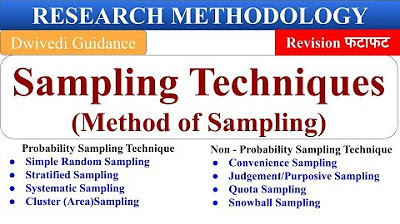Cluster Sampling: Definition, Examples
Summary
TLDRThis video explains cluster sampling, its requirements, and the distinction from stratified sampling. Cluster sampling involves dividing a population into natural groups or clusters and randomly selecting samples from each. It's particularly useful when direct access to the entire population is impractical. Key requirements include heterogeneity within clusters and mutual exclusivity between them. Unlike stratified sampling, which groups by characteristics, cluster sampling relies on natural groupings like geographic locations. The video clarifies the process and highlights its practicality over other sampling methods.
Takeaways
- 🌐 Cluster sampling is used when natural groups are present in a population.
- 🔄 The population is divided into clusters, and random samples are collected from each.
- 💼 It's often used in market research when complete population information is unavailable.
- 📊 Cluster elements should ideally be as heterogeneous as possible, containing distinct subpopulations.
- 🌟 Each cluster should be a small representation of the entire population.
- 🚫 Clusters should be mutually exclusive, meaning they should not overlap.
- 🔄 Cluster sampling is similar to stratified sampling but focuses on natural groupings rather than characteristics.
- 🗺️ An example of natural grouping is geographic location, like clusters in California, New York, and Florida.
- 🎰 Simple random sampling is used to choose one cluster for interviews from the natural groupings.
- 📝 Once a cluster is chosen, all members of that cluster are interviewed, and those in unchosen clusters are not.
Q & A
What is cluster sampling?
-Cluster sampling is a technique where the entire population is divided into natural groups called clusters, and then random samples are collected from each cluster.
When is cluster sampling used?
-Cluster sampling is used when natural groups are present in a population, and when it is more economical or practical than other sampling methods like stratified sampling or simple random sampling.
What are the requirements for cluster sampling?
-For cluster sampling, elements should be as heterogeneous as possible, each cluster should be a small representation of the entire population, and clusters should be mutually exclusive.
How is cluster sampling used in market research?
-In market research, cluster sampling is often used when a researcher cannot access information about the entire population but can get information about the clusters.
What is the difference between cluster sampling and stratified sampling?
-Cluster sampling relies on natural groupings like geographic location, while stratified sampling involves grouping by characteristics, such as color or age.
Can you provide an example of how cluster sampling might work?
-An example of cluster sampling could be selecting clusters of people from different states like California, New York, and Florida, and then using simple random sampling to choose one cluster for interviews.
What happens if simple random sampling picks a cluster like California?
-If simple random sampling picks California, all individuals within that California cluster would be interviewed, while those in other clusters would not be selected.
Why might cluster sampling be more practical than simple random sampling?
-Cluster sampling might be more practical because it can be easier and less costly to access and gather data from natural clusters rather than from individuals scattered throughout the entire population.
How does the size of each cluster affect the sampling process?
-The size of each cluster should ideally be small enough to represent the entire population but large enough to provide a meaningful sample. This balance is crucial for the accuracy of the sampling.
What does it mean for clusters to be mutually exclusive?
-Mutually exclusive clusters mean that no individual can belong to more than one cluster. This ensures that the sampling process does not overlap and that each member of the population is only counted once.
How does the heterogeneity of clusters affect the representativeness of the sample?
-Heterogeneity in clusters ensures that the sample is diverse and representative of the entire population. If clusters are too homogeneous, the sample may not accurately reflect the population's diversity.
Outlines

Этот раздел доступен только подписчикам платных тарифов. Пожалуйста, перейдите на платный тариф для доступа.
Перейти на платный тарифMindmap

Этот раздел доступен только подписчикам платных тарифов. Пожалуйста, перейдите на платный тариф для доступа.
Перейти на платный тарифKeywords

Этот раздел доступен только подписчикам платных тарифов. Пожалуйста, перейдите на платный тариф для доступа.
Перейти на платный тарифHighlights

Этот раздел доступен только подписчикам платных тарифов. Пожалуйста, перейдите на платный тариф для доступа.
Перейти на платный тарифTranscripts

Этот раздел доступен только подписчикам платных тарифов. Пожалуйста, перейдите на платный тариф для доступа.
Перейти на платный тарифПосмотреть больше похожих видео

What Are The Types Of Sampling Techniques In Statistics - Random, Stratified, Cluster, Systematic

Cluster Sampling

KULIAH METODE PENELITIAN (5) - POPULASI DAN TEKNIK SAMPLING

sampling techniques, types of sampling, probability & non probability sampling, Research methodology

Teknik Sampling

[PART 2] TEKNIK SAMPLING PROBABILITAS
5.0 / 5 (0 votes)
